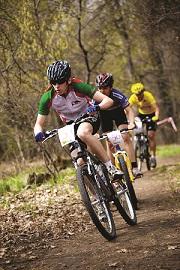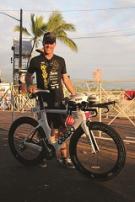

Identification of Young Athletes
USA Cycling has the goal of making the U.S. the most successful cycling country in the world. That starts with developing the best talent. Our organization holds approximately a dozen Regional Talent ID Camps around the United States from spring through summer. We accept kids age 14 to 21 into those camps. The purpose of the camps is to give kids a chance to show us what they can do, and to allow us to give them guidance and coaching. Sometimes, local bicycling clubs or coaches will contact us with the names of young athletes they think should be on our radar, and of course, that’s really helpful too.

We start our camps for athletes at the age of 14 because this is when we have a sense of what kids are going to be like as they get older and develop into serious athletes. By the time they hit high school, kids have usually tried enough different sports to know which one they might excel in. Any kid can be good at something in third or fourth grade, but in general, you want them just to be happy and active at that age. Otherwise, if they’re pushed too hard into one sport, it becomes work rather than play, and they get tired of it. They may have a lot of promise, but they get burned out and they don’t want to do it any longer. You want them – not their parents – to make the choice of whether they’re going to become a competitive athlete, and if so, in which sport.

There are obstacles to developing cycling, and most of them are rooted in awareness of the sport, which is very much a national phenomenon. Cycling has a reputation as a niche sport, and one can argue it still is.
Not as many parents are aware of cycling as a true sport. They know kids ride their bikes, but they don’t really understand the competitive opportunity – and they won’t, unless they themselves are cyclists or are somehow involved with the sport. For better or for worse, cycling remains a European sport. It’s not one of the major sports in the United States – it doesn’t take place on a field, it doesn’t use a stick and a puck or a bat and ball – it’s very different. You don’t see it on ESPN and the majority of the big races are not in this country, however races like the Tour of California and the Pro Cycling Challenge are starting to change this. Cycling has also grown as a varsity sport in many colleges, and we’re glad to see this as well.

At USA Cycling, we naturally want to bring as many people as we can into competitive cycling. There are plenty of people who are interested in racing but they might not be candidates for the camps. They might be older than the 14-21 age group – they might even be a 60-year-old rider – or maybe they are a junior who isn’t really camp material. Either way, they’re eligible for our Beginning Racer program, which is offered in various cities around the country.
For many people, bicycle racing is intimidating. They don’t know the rules or the etiquette and they’re not sure how to stay safe – all the things the professionals know already. They’d like to enter a race, but they don’t feel like they belong. We use the Beginning Racer program to acquaint them with all those things, and we do it in a five-week series of clinics that includes instructions, mentored races and debriefing sessions. Each clinic lasts one day, and one clinic is offered each week.
The overall goal is to teach people to race so they are more comfortable when they get out there. The first day of the clinic is all about protecting your wheel, which is a key factor in keeping a cyclist safe when riding in a group. There is a one-hour clinic with a coach who goes over all the cyclist needs to know about how to protect their wheel. After this, they go into a race, which might be a competitive or non-competitive race –what’s important is that the cyclist is getting the experience of riding in a group. The coach is right there in the race with the rider, and is talking to that person and coaching them and keeping them focused.

Beginning Racer clinics are offered throughout the year. We are providing race owners with the outline for how to conduct clinics – they have the curriculum we have developed to help people learn everything they need. People also don’t need to be totally new to racing to attend – they can come to brush up on their skills, and they may wind up being a mentor to someone else who needs coaching.
Interscholastic Program
USA Cycling has also worked to help develop an interscholastic league program. This program, which is offered on the high school level, allows students to compete for their school, against students from other schools in their area. It is up to the individual league to determine what discipline students will compete in – road racing, mountain biking, etc.
The experience is modeled after collegiate cycling, and provides many students with their first experience of competitive cycling – which they may choose to pursue in college and later on. We’re also finding the kids are benefitting from it, as it’s another form of physical activity for them.
We’ve said previously that USA Cycling wants the United States to be the top producer of cycling talent in the world. This is still our goal, but we also offer a wide variety of opportunities for people at all levels to get involved in all sorts of rides, from clubs to competition and everything in between. The goal is to get as many people cycling – and enjoying it – as possible.

